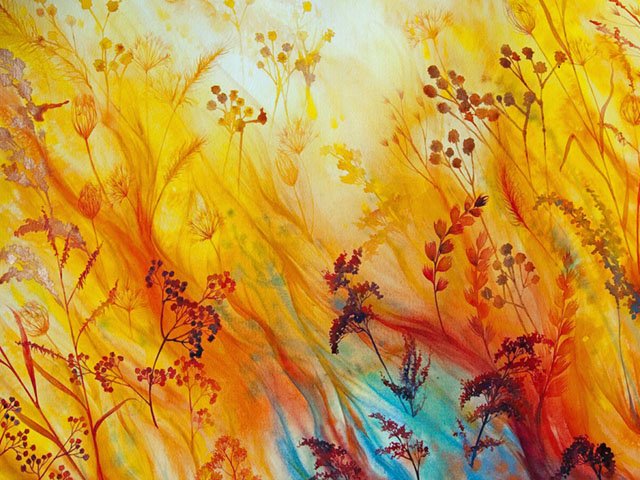“Our ability to perceive quality in nature begins, as in art, with the pretty,” Wisconsin conservationist Aldo Leopold wrote in A Sand County Almanac, his groundbreaking work from 1949. “It expands through successive stages of the beautiful to values as yet uncaptured by language.”
Leopold’s ecological awareness was ahead of its time. But even then he feared the demise of natural landscapes crushed under the incessant tread of human progress: “I am glad I will not be young in a future without wilderness.”
The naturalist may have taken heart in Uprooted: Plants in a Changing Climate. The exhibit, a blend of art and science that examines the impact of society and invasive species on Wisconsin’s native plants, runs through June 23 at the James Watrous Gallery on Overture Center’s third floor.
Works by seven different Wisconsin women artists, including watercolors, oil-on-linen paintings, and three-dimensional objects made of natural materials highlight the diverse and delicate plants and ecosystems within the state.
The artwork itself shimmers with life, a tangle of textures representing the natural world’s growth and decay without the destructive influence of humankind. Richness of detail and complexity balance with images of abstraction among the canvasses, while three-dimensional creations by Native American artists utilize natural materials to draw gallery goers more deeply into the experience.
Through direct observation and input from experts at the UW Arboretum and the botany department at UW-Madison, the artists created images and objects that are visually compelling while also alerting viewers to the impact of climate change on those ecosystems.
Cynthia Brinich-Langlois and Bethann Moran-Handzlik studied the state’s northern forests, while Helen Klebesadel [MFA ’89] and Lynne Railsback looked at central Wisconsin’s prairies and oak savanna. Katie Musolff focused on plants from the Mississippi River wetlands, and Native American artists Marian Miner and Terri Hom contributed a group of black ash baskets and birchbark pieces, respectively, to showcase the beauty and texture of tree species currently endangered by climate change.

